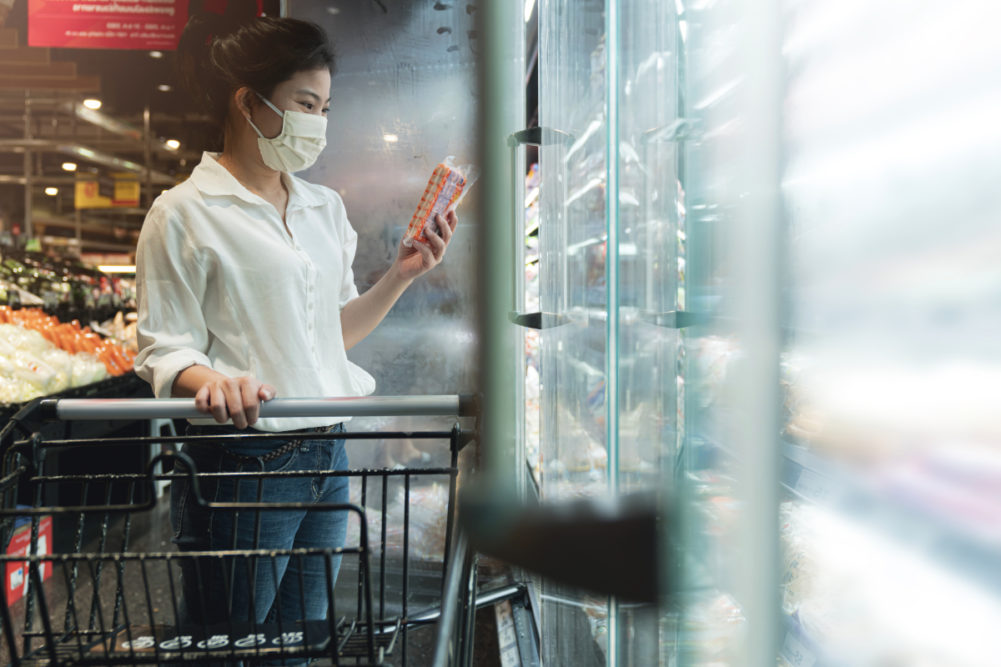ARLINGTON, VA. — Demand for consumer packaged goods in 2021 will slow from the record levels experienced during COVID-19 while remaining above pre-pandemic norms, even as vaccines become widely available, the Consumer Brands Association (CBA) predicted.
The association published a new report highlighting the post-pandemic outlook in 2021. CPG purchases are expected to decelerate by 1% to 2% from 2020 levels while still growing by 7.4% to 8.5% compared to 2019 levels.
“Over the last year, the CPG industry has met unprecedented demand by being unafraid to change the game,” said Geoff Freeman, president and chief executive officer of the CBA. “There is no ‘normal’ to which the industry will return — urgent transformation is the only way forward. From elevated demand to supply chain to managing waste, everything about the CPG industry is in the midst of dramatic change and capitalizing on enormous opportunities.”
The CBA surveyed more than 1,000 Americans and found the return to normalcy likely will be slow. When asked when they would consider the pandemic over and resume typical activities, nearly 40% said when most Americans are vaccinated and enough time has passed to confirm safety. One-in-three said the threat of COVID-19 will never completely disappear. Just 7% said the pandemic already is over.
The report highlighted five trends that will shape the CPG industry in 2021. Along with continued elevated demand for CPG products, supply chain innovations are expected to drive major changes in operations. Lingering fear of shortages may lead consumers to stay stocked up on essential items. Nearly half (45%) of respondents said they plan to stay stocked up on shelf-stable food after the pandemic.
The spike in e-commerce also will drive supply chain innovations. Forty-seven percent of consumers said they used online ordering for delivery or click-and-collect in 2020, and 77% said they plan to continue shopping online after the pandemic. Slightly less than half said they would take larger, infrequent trips to the grocery store before the pandemic, compared to 61% who said they will continue those larger, infrequent trips in 2021.
“When supply chains work well, they’re almost invisible, even though we rely on them every day,” said Tom Madrecki, vice president of supply chain and logistics at the CBA. “Supply chain will snap back in the minds of consumers if we see empty shelves again. They haven’t forgotten.”
The CPG industry will see renewed urgency to improve the nation’s recycling system following a year of increased plastic usage and waste, according to the report. Nearly 60% of respondents said they want to see a mix of packaging alternatives, and 14% said properly recycled plastic is a better option than other alternatives. The imperative to recycle will continue growing as younger consumers enter adulthood, with recyclable packaging being twice as important to Gen Z as it is to millennials.
Consumer expectations around digital transparency also will accelerate following a year of virtual living and increased digital fluency. Consumers increasingly are moving beyond the physical label to digital labels that offer real-time updates and changes, the CBA said. Around three-quarters of respondents said they support sharing information digitally that cannot fit on a label, and 57% said they place greater trust in companies that offer more information than is required about their products.
“The pandemic changed the digital game,” said Betsy Booren, senior vice president of regulatory and technical affairs at the CBA. “In five years, we will be stunned that we even had conversations about the appropriateness of putting product information online.”
Consumer trust in CPG companies increased in 2020 as the industry invested to support both shoppers and employees. A study from McKinsey found companies invested in the essential well-being of their employees through incentive pay, enhanced workplace safety and improved hygiene features in 2020. Those investments are expected to continue at a higher rate throughout 2021.
Businesses also are expected to lead on social and environmental issues at a moment when few consumers are positive about their buying decisions, according to the report.
“I talk to CPG leaders every day and they are increasingly committed to being a force for good,” said Ellen Davis, executive vice president of industry engagement at the CBA. “Expect to see holistic changes. Not just the product, not even just the company — change will extend to anywhere the business touches.”
Americans are more likely to punish a brand they have learned something negative about than reward a brand they have learned something positive about, she added. Forty percent of respondents said they are equally likely to take both actions, while 25% said they are likely to punish and 20% said they are likely to reward. Just 15% said they are not likely to do either, suggesting passive consumers have quickly become the minority.
“How brands are perceived is increasingly rooted in their social and environmental values,” Ms. Davis said. “The pandemic and social injustice seen in the last year have further heightened conscious consumerism. I expect to see a new focus on ESG that will drive 10 years of change in a third of that time.”






